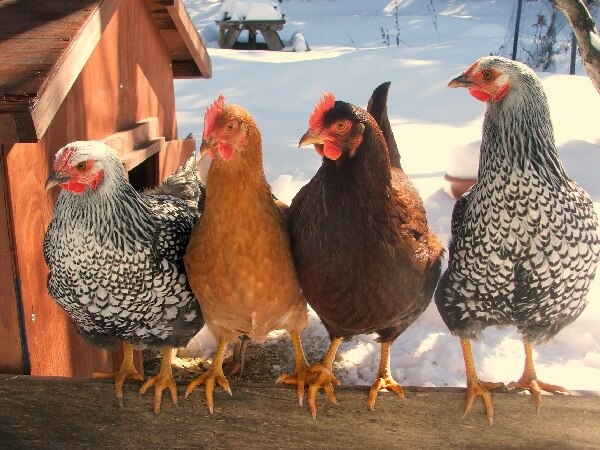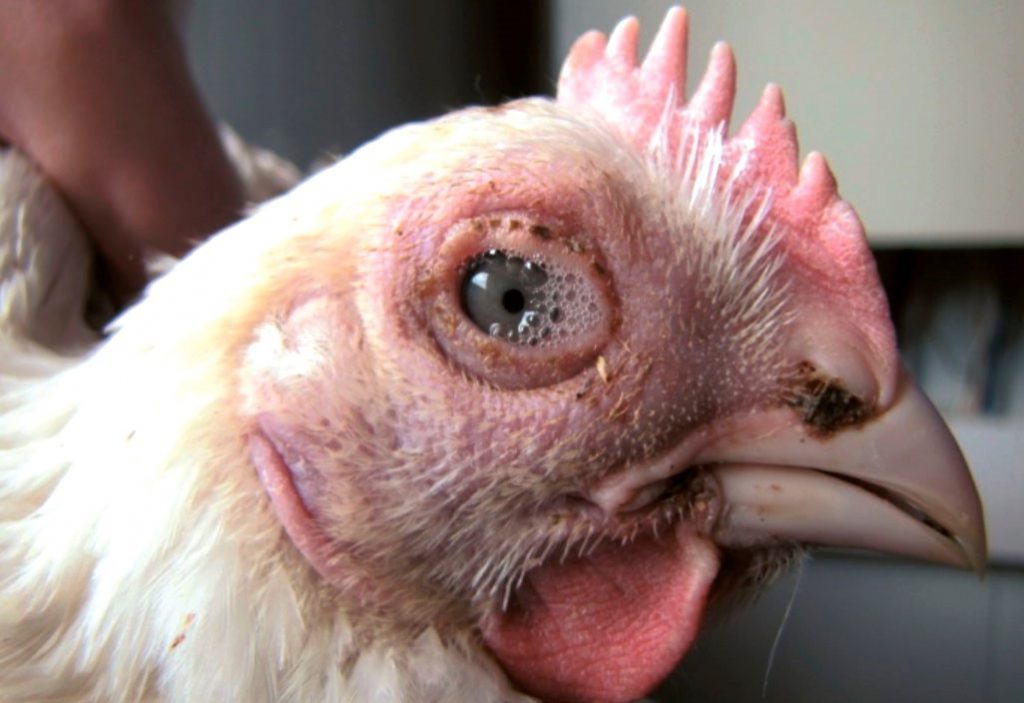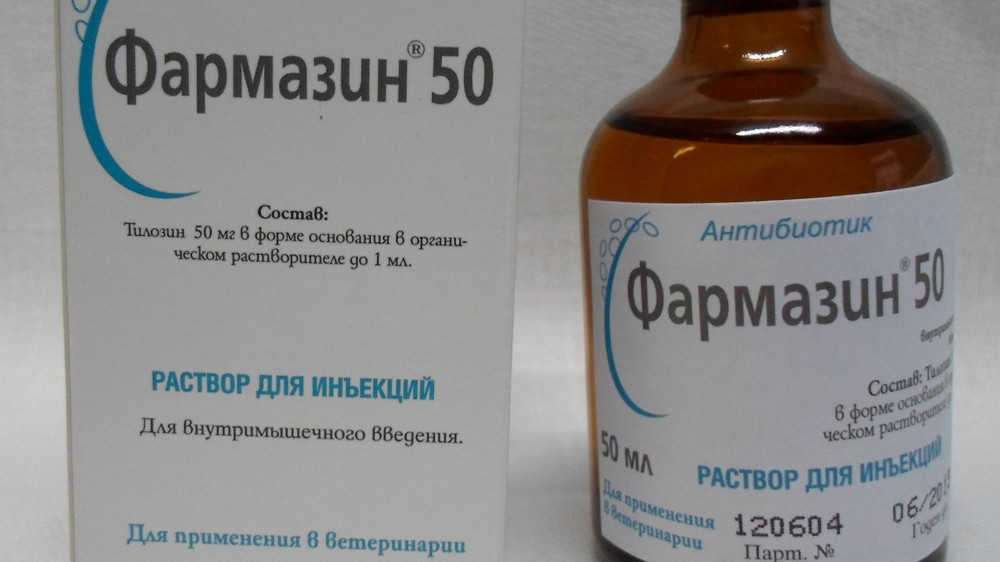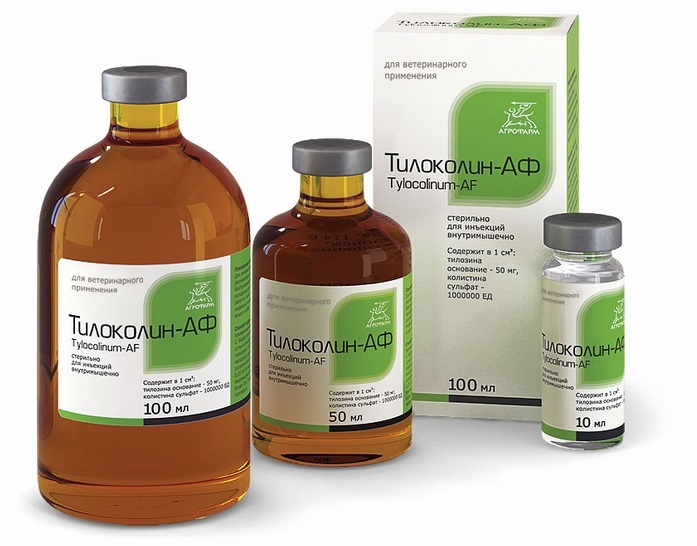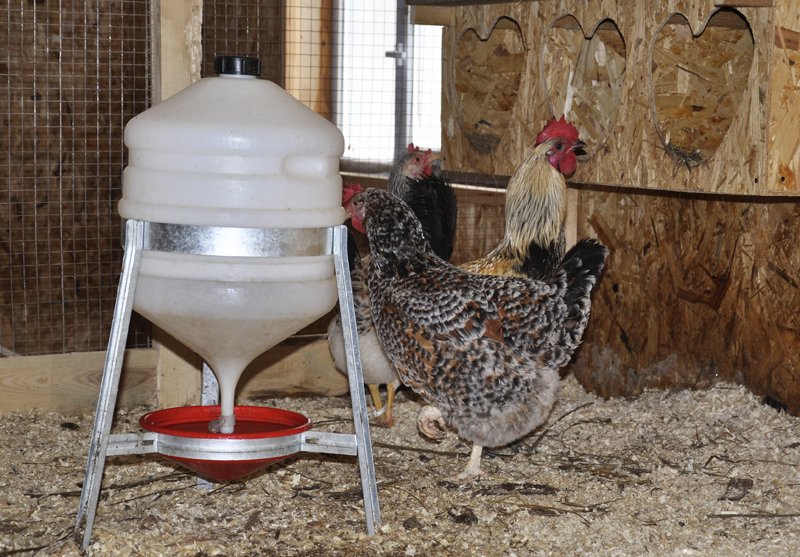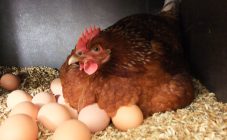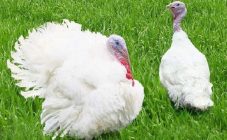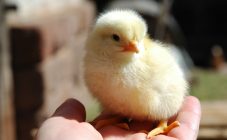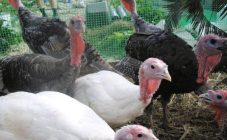Breeding poultry provides the breeder with meat, eggs and feathers. In order for the livestock to be healthy and not be infected with a disease such as mycoplasmosis in chickens, it is necessary to provide proper care and organize appropriate conditions for keeping the poultry.
Features of the content
To breed chickens and broilers at home, you need to build a poultry house and equip it correctly. It is recommended to use natural materials for construction. The inner part of the walls should be covered with insulation and plastered. This will help increase the insulation of the barn.
To avoid the development of ailments such as mycoplasmosis in chickens and adults, the house must be equipped with a good ventilation system. For this, a hatch with doors is mounted in the ceiling of the room, which, if necessary, can be easily opened or closed. Birds will feel good in the chicken coop if it is warm and light. To illuminate the house in warm weather, window openings are sufficient through which daylight will enter. In winter, it is recommended to use additional lighting by installing fluorescent lamps.
In order to prevent poultry from freezing at low temperatures, it is better to cover the floor with hay or dry grass. The litter changes as it gets dirty. When installing the floor of the chicken coop, you need to pay attention to the fact that it should be located at a slight angle. This will make cleaning easier.
For sleep and rest, chickens use perches, presented in the form of wooden boards no more than 40 cm wide. By arranging them in several tiers, it will be possible to save free space in the barn. In order for hens to be able to lay eggs, nests need to be made in the hen house. For this, wooden boxes are suitable, the cavity of which is covered with hay or dry grass. The number of nests corresponds to the size of the herd.
Drinking bowls and feeders are located along the perimeter of the chicken coop. They shouldn't be standing next to each other. Otherwise, water will splash and enter the food, which will become unusable.
It would be nice to organize a place for walking birds. For this, the territory is fenced off with a net. Experienced breeders advise sowing perennial grasses in the poultry area. In this way, the chickens will receive many of the trace elements and vitamins necessary for their growth.
Mycoplasmosis in chickens: symptoms and treatment
Mycoplasmosis is quite common in broilers and chickens. Often, a dangerous disease goes along with other bacterial or viral ailments. The reasons for the development of the disease may be improperly organized conditions for keeping poultry: high density of livestock, poorly organized ventilation, unsanitary conditions, low air temperature in the poultry house.
Mycoplasmosis in broiler chicks can be transmitted through eggs from parents to chicks, as well as through air, feed and drink.
A distinctive feature of the disease is that it proceeds very slowly. The first signs of infestation of chicks can be seen only 20-50 days after hatching.
Mycoplasmosis in broilers (symptoms and treatment) is the most common concern for those involved in poultry farming.Because infected or already ill birds are a source of infection for other individuals for a long period.
It is necessary to identify the signs of the disease as early as possible. Among the most important are the following:
- hard breath;
- poor appetite;
- slow weight gain by the bird;
- swelling of the eyelids;
- discharge of tears.
The manifestation of these symptoms should be an alarm signal for a person that an urgent need to start treatment therapy.
Among different breeds of domestic birds, fast-growing ones are most susceptible to infection. This is due to the fact that they have a very weak immune system and a loose constitution.
In laying hens, the development of the disease is accompanied by a drop in egg production up to 20% and the death of embryos.
It is quite difficult to diagnose the disease. This is due to the fact that the symptomatology develops secretly. Experienced breeders use the serum-drop agglutination reaction to diagnose mycoplasmosis. The use of this method makes it possible to establish directly on the spot which part of the livestock is already infected.
Treatment of the disease is carried out through the use of antibiotics. All birds should be treated, not just sick birds. To do this, you can use such effective agents as pharmacin (1 g per 1 l of water), tilazine or tilan (0.6 g per 1 l of water), tilmikovet (3 ml per 1 l of water), pneumotil (0.5 ml per 1 liter of water), which belong to the group of antibiotics.
The birds need to be treated immediately. To do this, the drugs are dissolved in the water that the birds drink. For a day, an adult bird should drink within 150 - 350 ml of water with medicine. The amount of liquid depends on how old the birds are. Therapeutic therapy continues for 5 to 7 days.
The above drugs can also be used for preventive purposes. In this case, the duration of their use is 2 - 4 days.
If it is not possible to accurately determine the infection of birds with mycoplasmosis, veterinarians recommend using preparations of a complex variety. Their peculiarity lies in the fact that active components are not only antibiotics, but also components that have the ability to destroy other pathogenic bacteria.
Among the most effective complex drugs are the following:
- Biopharm. It is added to food. The amount of the product ranges from 3.0 to 75 g per 1000 individuals. The dosage depends on the age of the birds.
- Denagard powder. It is mixed with feed.
- Tylodox. The product is dissolved in water (1 ml per 1 liter of water).
Good results can also be obtained through injections, which must be given intramuscularly. For this purpose, the following drugs are used:
- tylocolin AF;
- tylosin 50 (200);
- tialong;
- tilanic;
- tetracycline.
The dosage depends on the weight of the bird.
For the treatment to be effective, experienced poultry farmers advise sanitizing the air inside the chicken coop. Suitable for this:
- lactic acid;
- iodotriethylene glycol;
- monclavite.
They are sprayed in aerosols inside the barn.
For the purpose of prevention, it is not recommended to neglect the vaccination of the entire livestock. For this, complex vaccines are used, which include not only mycoplasmosis, but also other diseases of infectious etiology.
The use of live vaccines can provoke massive infection of the entire livestock or the development of side effects.
Today, new vaccines have been created using genetic engineering that do not cause adverse reactions. Among the disadvantages of these drugs is the fact that their post-vaccination immunity is very low.
Inactivated drugs are very popular among breeders.They are used twice: on the 30th and 150th day after the birth of the chicks.
There are also traditional methods of treating mycoplasmosis in chickens and broilers, aimed at enhancing the action of drugs that are used in therapeutic therapy. In addition, traditional medicine helps to increase the immunity of birds. For this purpose, you can use a decoction, which consists of an equal amount of St. John's wort, corn stigmas, oak bark, thyme. Boil, cool and give to the bird as a drink.
Some poultry farmers recommend giving goat milk to infected flocks. Thanks to this, it is possible to strengthen the immunity of birds.
It is possible to reduce the possibility of the spread of mycoplasmosis in chickens by creating appropriate conditions for keeping and feeding. If it is untimely to clean or air in a room where birds are kept, the likelihood of the development of pathogenic bacteria increases. An unbalanced diet leads to the fact that the immune system of birds becomes weak, the body of birds does not have the strength to resist the spread of mycoplasmosis bacteria and fight the disease. And you should not assume that using only folk methods will cure sick individuals. Ignoring the medical method of treating mycoplasmosis will lead to the fact that after a while all livestock will die.
